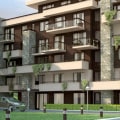Residential architecture has long been a reflection of society’s evolving tastes, technologies, and values. From the symmetry and timeless elegance of Colonial and Victorian homes to the clean lines and functional minimalism of modern builds, today’s homes often draw from a blend of both classic and contemporary influences. This merging of styles results in spaces that feel both familiar and fresh—offering comfort, efficiency, and aesthetic appeal in equal measure. As homeowners become more design-conscious, architecture is evolving to meet the demand for homes that are not only beautiful but also highly functional and environmentally responsible.
The Rise of Open Concepts and Natural Flow
Contemporary trends have seen a strong shift toward open floor plans that prioritize space, light, and connectivity. Large, unobstructed layouts now replace segmented rooms, making interiors feel larger and more welcoming. This approach emphasizes flexibility—allowing the kitchen, dining, and living areas to flow seamlessly together, perfect for entertaining or simply maintaining family interaction. Large sliding doors and windows further blur the line between indoor and outdoor living, a feature inspired by the growing popularity of biophilic design, which integrates natural elements into built environments to promote well-being.
Sustainable Design Takes Center Stage
One of the most important drivers of modern residential architecture is sustainability. Homeowners are increasingly choosing materials and building methods that reduce environmental impact, from energy-efficient windows and insulation to solar panels and green roofs. Architects are integrating passive solar design principles, rainwater harvesting systems, and locally sourced materials to make homes smarter and greener. This focus on sustainability doesn’t compromise style—instead, it often enhances it, with natural textures, earthy tones, and organic shapes becoming staples of contemporary design language.
Embracing Mixed Materials and Bold Geometry
While classic homes often rely on uniformity and repetition, contemporary designs thrive on contrast. Combining wood with steel, stone with glass, or brick with concrete, modern homes create visual interest through texture and layering. Geometric elements—such as asymmetrical rooflines, cantilevered structures, or angular façades—are becoming hallmarks of innovative residential design. These architectural statements break monotony and provide a bold edge to suburban landscapes that were once dominated by predictable silhouettes.
The New Role of Color and Finishes
Color plays a vital role in how a home is perceived, and in both classic and modern homes, exterior painting serves as a crucial design tool. Whether using crisp whites to highlight clean lines or dark, moody hues to anchor a home into its natural surroundings, homeowners now have more freedom than ever to personalize the exterior of their homes. Finishes like matte siding, exposed brick, and metal accents can all be enhanced with thoughtful color palettes, allowing traditional homes to feel revitalized and modern builds to stand out with confidence.
Conclusion: A Living Evolution of Design
Residential architecture continues to evolve, drawing on the past while looking toward the future. Today’s homes are not just about shelter—they’re about self-expression, lifestyle, and legacy. As trends shift toward sustainability, open living, and material contrast, the fusion of classic charm and contemporary innovation is setting the stage for a new era of home design. Whether you’re restoring an old gem or building something brand new, the architecture of today is all about honoring where we’ve been while embracing where we’re headed.



